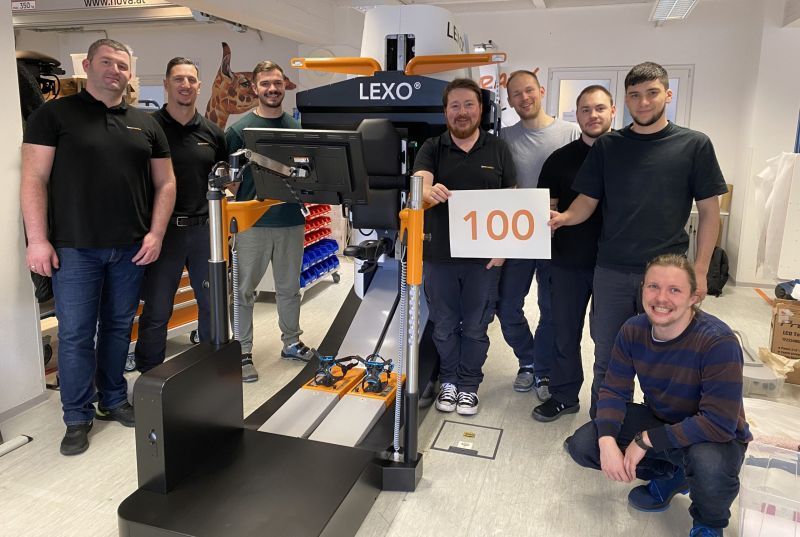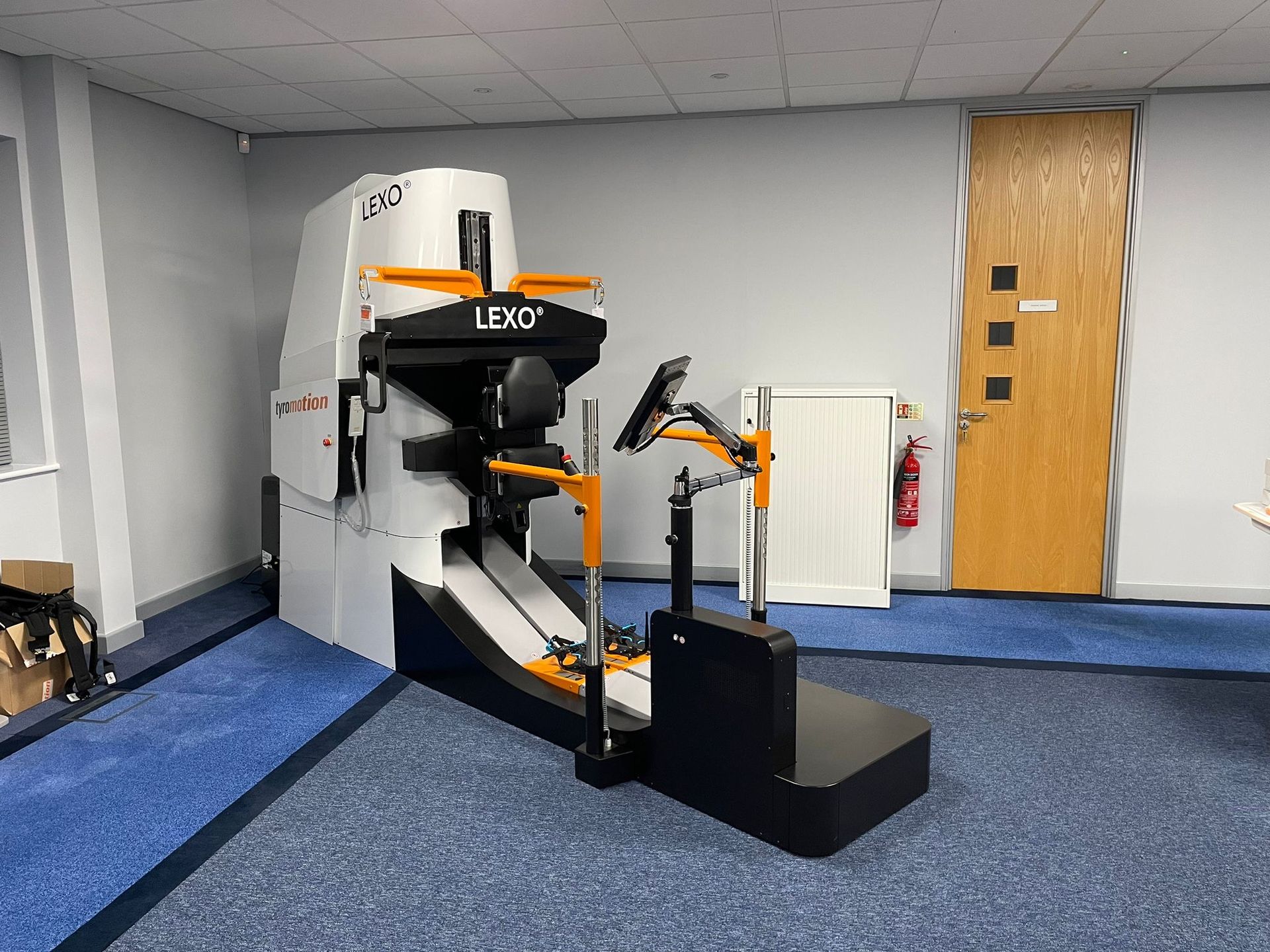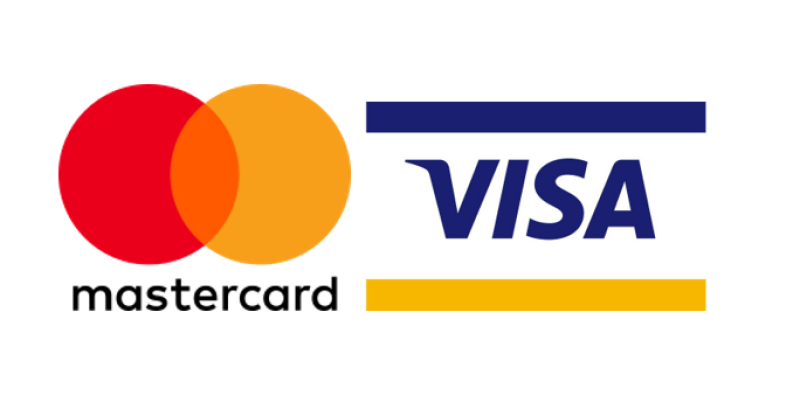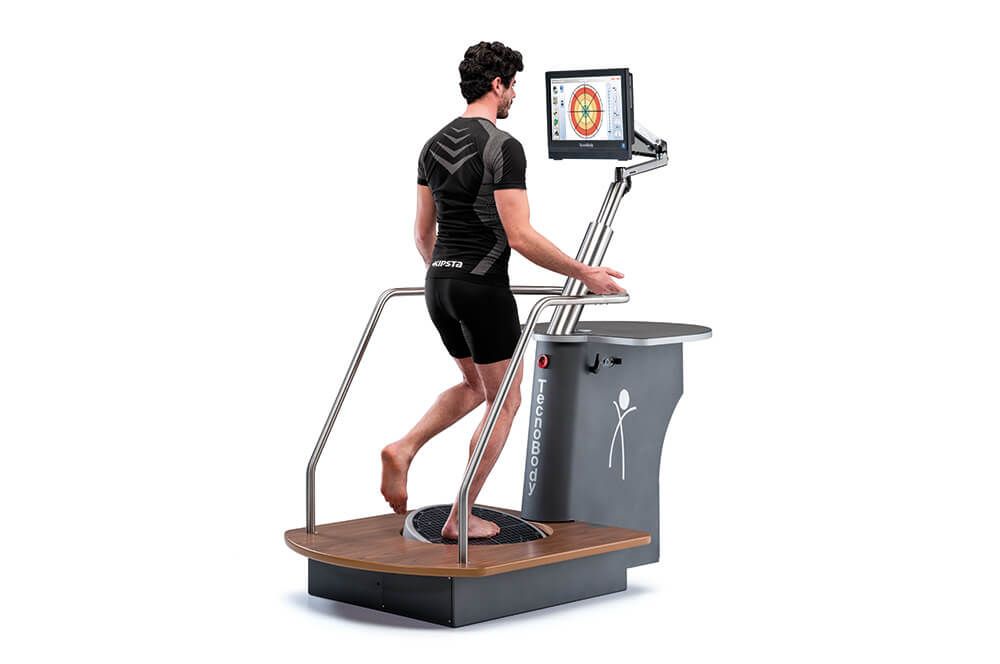
Slide title
Write your caption hereButton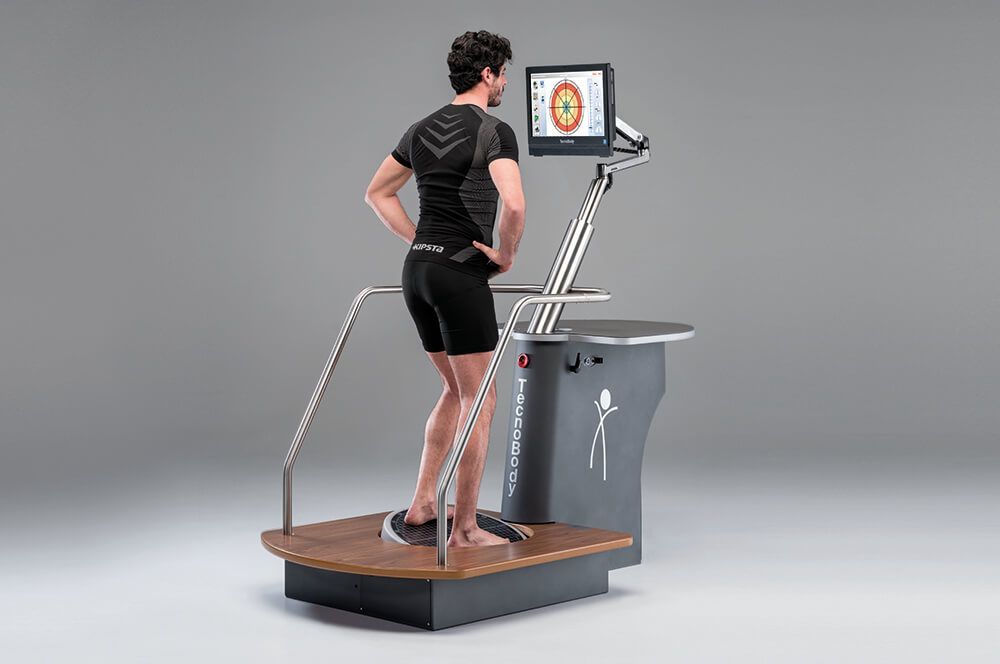
Slide title
Write your caption hereButton
Prokin 252
Emblem of TecnoBody research and development, Prokin is the first proprioceptive-stabilometric assessment machine born from our experience, one of the most widespread systems for the rehabilitation of the lower limbs.
The technology applied to Prokin 252 sees the mechanical system and electronic stability controlat 50 levels connected to the software for complete integration and maximum control of gestures.
Evaluating the balance of your patients and athletes in both the orthopedic and neurological areas during the recovery from injuries will be the easiest with Prokin 252
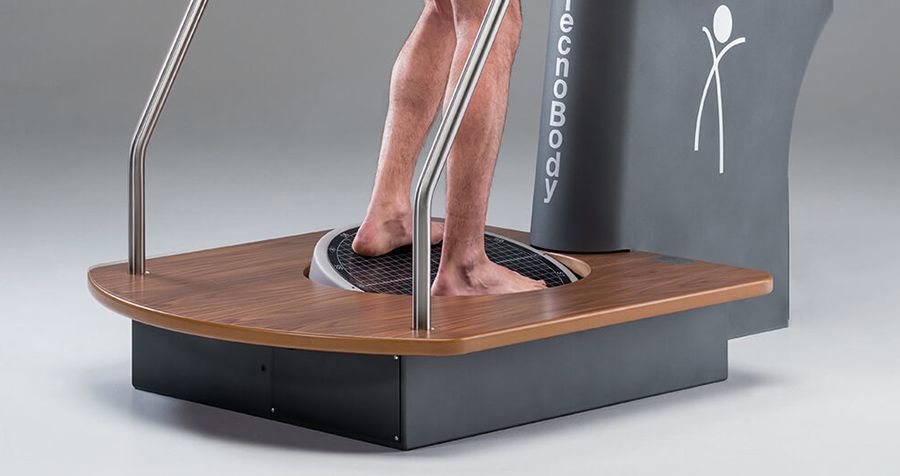
The ProKin 252 platform
The self-propelled treadmill is the starting point for your patient to work on ProKin. When the patient moves with one foot resting on the platform, the data acquisition board transfers the angular displacements converted into electrical impulses to the PC.
The joint motion data collected in a kinesthetic trace is displayed on the monitor.

The ProKin 252 system
The stability of the mobile platform is managed by an electropneumatic system through an electronic pressure regulator, which allows an independent stability control on the two axes of anteroposterior movement and laterally on the left and right.
Thanks to this solution the system can be easily exploited and transformed from multi axial to mono axial. Flexibility of use and completeness of the system at the service of professionals and patients.
All of this is ProKin 252, your ally to help you rebuild the correct proprioceptive sensing map and an easy-to-use system in your rehab center.
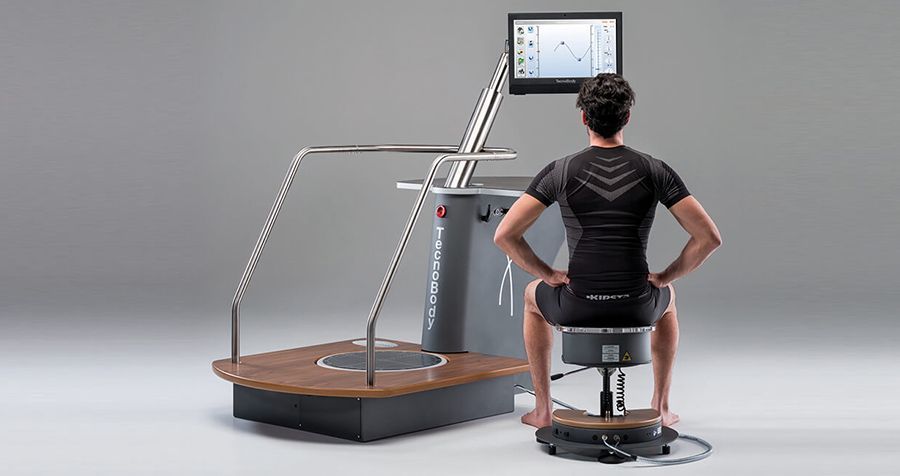
The trunk sensor
The TK Sensor Trunk Sensor is the bi-axial inclinometer that, applied to your patient's torso during the exercises performed on ProKin, is able to detect the oscillations of the torso in every direction.
The use of the trunk sensor combined with ProKin during proprioception exercises helps you to assess if the subject has a good peripheral control, ie the control of ankles, knees and even, without making the bust intervene to compensate for poor posture.
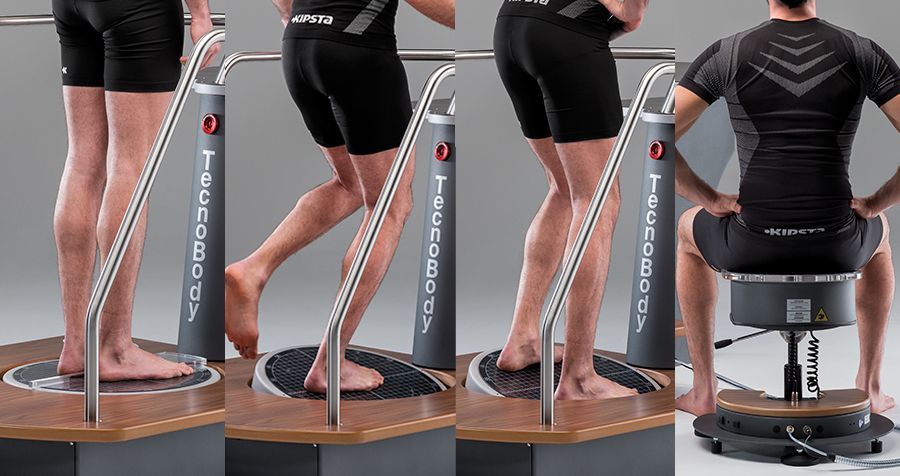
The configurations of Prokin 252
Thanks to the flexibility of the system, Prokin can be used in many different ways:
Static: the stabilometry allows the patient to be evaluated in a static situation with the oscillation of the pressure center (COP) and of the area and the perimeter of the Pressure Center
Monopodal dynamic with controlled load: the monopodalic mode with controlled load (BW Control) is often used for tibio-tarsal distortions, cruciate ligaments of the knee, hip prosthesis and peripheral proprioceptive control in pathologies affecting the central nervous system.
Bipodalic dynamics: useful for a dynamic bipodalic exercise that returns a test on the management of instability by the subject
With trunk control: the versatility of the Prokin PK 252 system is amplified with the integration of the Trunk Module. Equipped with 30 levels of instability, the Trunk module allows an exercise and an assessment of the pelvic area in a sitting position.
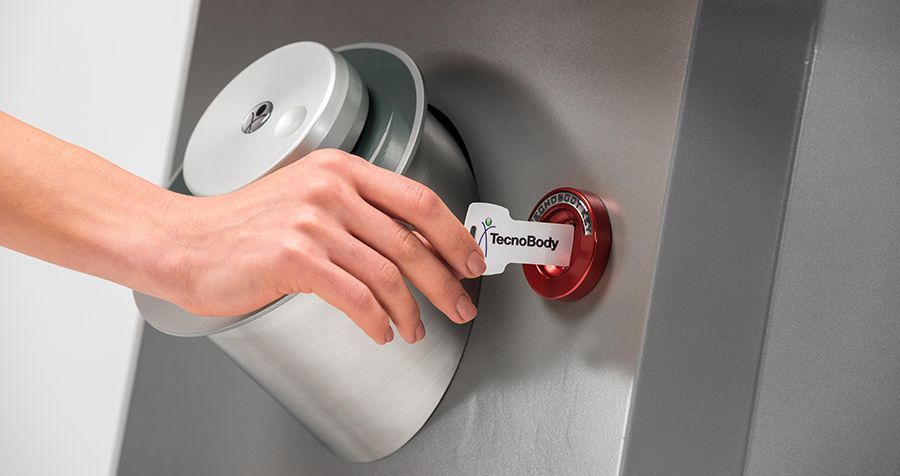
TecnoBody Key, your training at your fingertips
An exclusive connection between the user and the system, the TecnoBody Key allows you to save your parameters, workouts and reports, always available for constant feedback and to set up your own personalised plans.
The assessment of your strength, balance, stability and elasticity are always available because the Key is recognised by the system at any time. Through the Key you and your patient you can constantly monitor the progress of the rehabilitation process and set up any changes to the physical rehabilitation program.
Specifications
General
- Display touch screen 20" with 1600x900 pixel resolutions
- Adjustable display height
- Static/dynamic platform with 55 cm dismeter
- Support platform and assistance 110x110 cm, ground elevation of 23 cm
- Trunk sensor for the posture
- Wrapping upper supports
- Step facilitation access
- Trunk balance seat
Dimension: Base 1850 x 1200 mm x H:1800-2000 mm
(Base: 72,83” x 47,24” H: 70.86-78.74")
Weight: 230 kg (507 lb)
Platform type: Dynamic-static
Use: Mono and bipodalic orthostatic and setting
Levels of instability: 50
Movement: Mono and biaxial
Load measurement 150 kg (330 lb)
Load resolution: 100 g (0.23 oz)
Platform angles measurements: +/- 15 °
Platform angles precision: 0.5 °
Platform angles resolution: 0.2 °
Trunk sensor angles measurements: +/- 30 °
Trunk sensor angles precision: 0.5 °
Trunk sensor angles resolution: 0.1 °
Seat angles measurements: +/- 15 °
Seat angles precision: 0.5 °
Seat angles resolution: 0.2 °
Sampling frequency: 20 Hz
PC connection: RS232
Electric supply: 230 VAC, 50 Hz, 2.6 A
Absorbed power: 600 Watt
Conformity Directive: 93/42/EEC - Standard EN 60601-1
Guarantee: 12 months
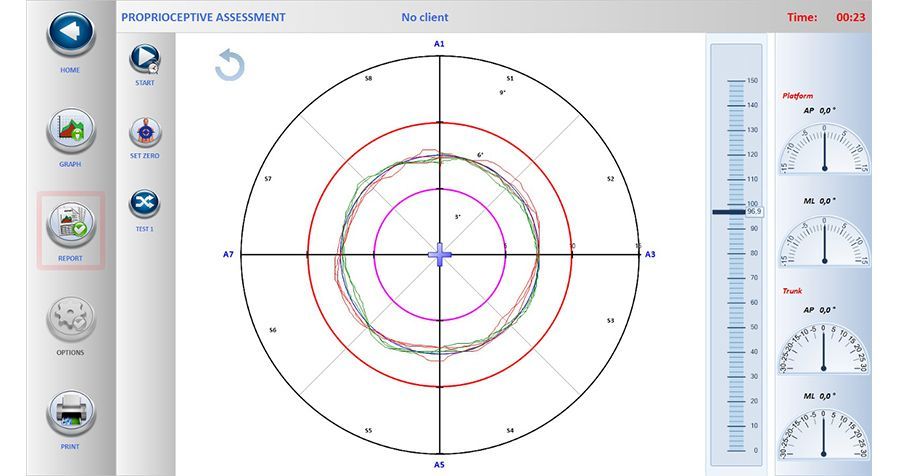
Assessment forms
The Prokin systems software is equipped with many assessment programs that allow you to understand exactly what the proprioceptive conditions of your patient are.
The sensory-motor evaluation involves tests with incremental difficulties such as the bipedal proprioceptive control test, the monopodalic controlled-load proprioceptive control test and the monopodalic proprioceptive control test with total load.
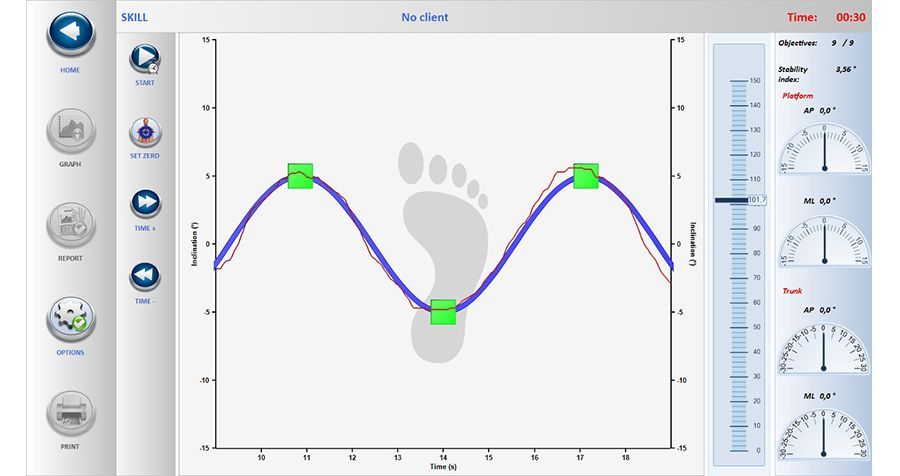
Training modules
After an assessment phase, the software automatically proposes a series of rehabilitation tracks designed to improve the perceptive conditions of each individual movement. The training modules can be performed either in bipodalic or mono-podalic mode with biofeedback in real time. The parameters that can be changed during training are many:
- joint RoM
- trunk control
- the coefficient of instability of the platform
The rehabilitation tracks are particularly useful both to perform proper proprioceptive training and for further verification at the local level. The colored spheres that your patient must reach by moving their center of gravity represent the end of stroke or joint transit points (Joint Position Sense), while the red lines represent the ideal kinesthetic path that the patient-client must follow.
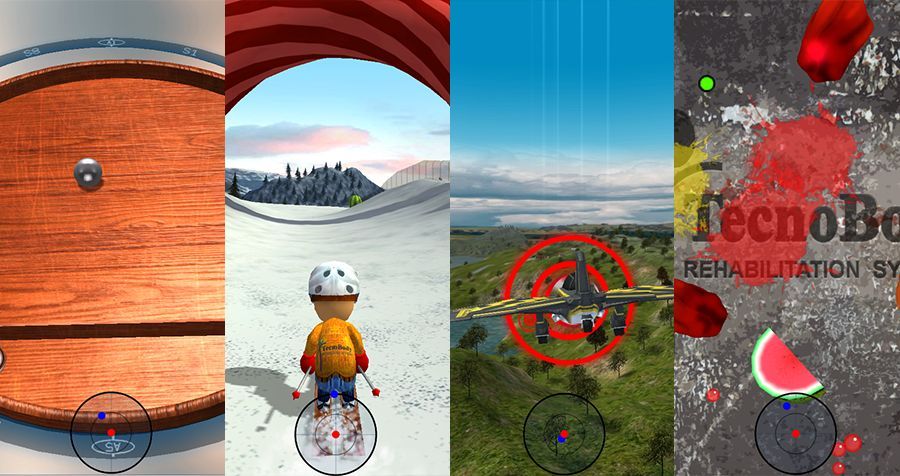
Rehabilitation games
Not only assessment and training, but also many games to train the balance, able to attract the attention of the patient during the training sessions and to keep up its level of concentration, but at the same time to make it escape from the classic session of motor rehabilitation. A library of environments and workouts SKI, Shoot, Fly and Equilibrium combines the effectiveness of the TecnoBody training with the playfulness and functionality of the game.
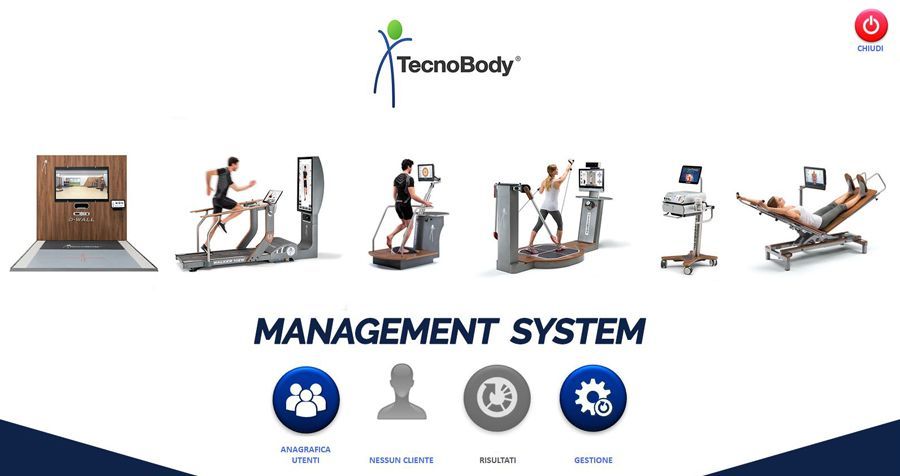
TecnoBody Management System
The PK252 system is managed through the TecnoBody Management System, the software platform that manages all the devices of the TecnoBody line.
All the features of the system are aimed at making it flexible and functional:
- personal database and shared user data
- possibility to create customised training programs directly associated with the user profile
- user recognition in the circuit through the exclusive TecnoBody Key
- "user guide" functionality to facilitate autonomous use of the systems by the user, who can log into the circuit using his own TecnoBody Key and perform guided training on the various TecnoBody systems
- planning and reporting of test sessions
- comprehensive reports of test sessions and training sessions
Ask for information
We will get back to you as soon as possible.
Please try again later.
ECTRON NEWS
ECTRON TWITTER
ECTRON TWITTER
© Ectron 2024. All rights reserved. Website design by Website Sorted
ADDRESS
Ectron Ltd, Anvil Street, Temple Quay, Bristol BS2 0QQ
enquiries@ectron.co.uk
TELEPHONE
+44 (0)117 9413979

